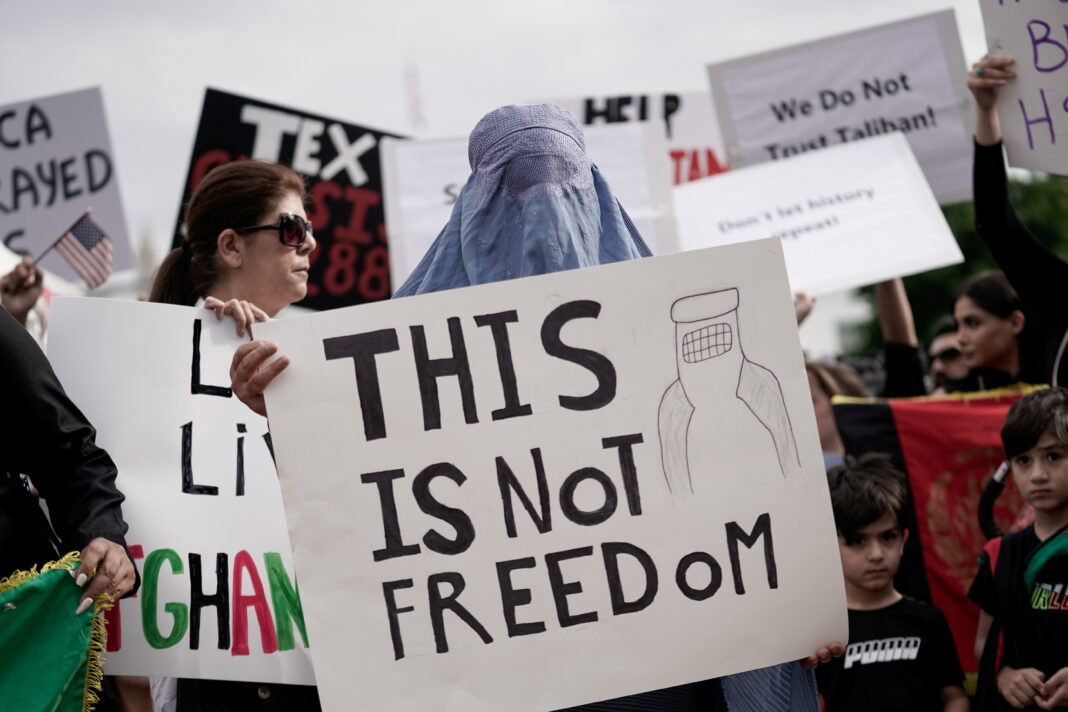A new front in the Afghan war: how the Taliban is making the most of social media platforms
Twenty years have already passed since the Taliban – at the epoch in charge for their first time from 1996 to 2001– imposed strict bans on television and the use of the Internet. In those days, practically any form of entertainment underwent the same treatment: the ownership of certain electronic devices was declared illegal; watching TV was not allowed; playing video games was outlawed. Listening to the propaganda radio station Voice of Sharia was the only “leisure” permitted. Such intransigency was justified in the name of the necessity to “control all those things that are wrong, obscene, immoral and against Islam”.
Ironically, though, following the Western incursion in Afghanistan and the subsequent toppling of the Taliban regime in 2001, the group abandoned its “digital austerity” and entered the online world, with special attention to the social networks that were catching on in those years. After all, in the third millenium, it is practically unthinkable for any contender for power to be completely absent from social media, all the more so against the background of impressive digitalisation that has occurred in Afghanistan over the past decade. Just to give some reference numbers, of 38 million inhabitants, 70% has now access to a mobile phone, and one out of three is registered in the social network.
Looking at this data, the Taliban must have realised the incredible potential inherent in communication technologies, and therefore decided to go digital, conscious that 21st-century wars are won in people’s hearts and minds, and perhaps drawn by the tempting prospect of having an invention by the West turned against its creator. For these reasons, the former students of Islamic religious schools are nowadays on Twitter, Telegram, YouTube, Facebook and WhatsApp; they also possess an official website, Al-Emarah, which publishes news in English, Pashto, Dari, Urdu and Arabic; and the Taliban spokesman, Zabihullah Mujahid, is regularly active on Twitter, with more than 300,000 followers.
Between propaganda and terror
As regards the objectives of the Taliban’s digital effort, these have changed in recent times to adapt to the political and military developments in the country. Indeed, being the group now allegedly in control of 85% of the Afghan soil, the main purpose of its media campaign has become that of conveying a reassuring image of itself, as a viable, moderate, and legitimate government. To this purpose, there is no violence in their tweets and posts, except for that by the Americans, which is repeatedly denounced, in tune with a narrative that depicts the Taliban as bearers of peace and the Westerners as bringer of war and death. In this vein, a Taliban spokesman’s Twitter account broadcasts images of a bunch of girls near a school, titling them: “Back to School in a New Afghanistan”. Similarly, videos circulate showing militia leaders in the company of known Taliban opponents or even enjoying themselves at an amusement park.
What is more, on August 17, one Taliban official even gave an interview to a woman journalist on an Afghan television station: an umpteenth, clumsy attempt by the extremists to persuade the audience of their good intentions towards women. Yet, as the military expert Benjamin Jensen puts it, “The Taliban don’t need to post content to remind the population they are brutal… The population knows that”. And indeed, the picture of peace and stability they portray to the outside world collides with an internal reality of political terror, which sees women delating their media accounts for fear of reprisals and news outlets either shutting down or falling into Taliban’s hands. According to the CNN, then, “the real test of the Taliban’s approach to the internet may not be what the group says, but what it allows the Afghan people to say”. In this respect, however, the New York Times seems to offer reassurances, by calling into question the Taliban’s current monitoring capabilities: it is one thing to propagandise through social bots, another to put in place a mass surveillance system.
The role of social media companies
Of course, social platforms like Facebook and Twitter will play a major part in shaping the future developments, thus determining a paradoxical relation between the Taliban and the US, in which the former have got rid of the latter’s troops that were stationed in Afghanistan, but still depend on US tech companies for the successful implementation of their communication strategy. In this context, social sites face a tough dilemma: while letting the Taliban spread their message may contribute to disseminate misinformation and may help them gain more supporters, restrictions could incite violent reprisals or even blow back on the Afghan population.
To date, the networks are moving in two directions: on the one hand, they are banning those accounts and content that explicitly infringe their rules; on the other hand, they are working to protect Afghan users at risk, for example by providing them with a one-click tool to lock their profiles. This said, despite the growing political role of social media, at the end of the day, the decision of whether or not to accord official recognition to the Taliban caretaker government still falls to the international community. And once such decision will be made, digital platforms will just have to adapt.
A new front in the Afghan war: how the Taliban is making the most of social media platforms




